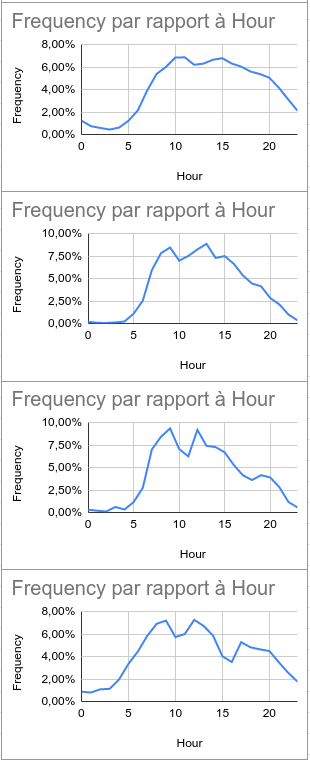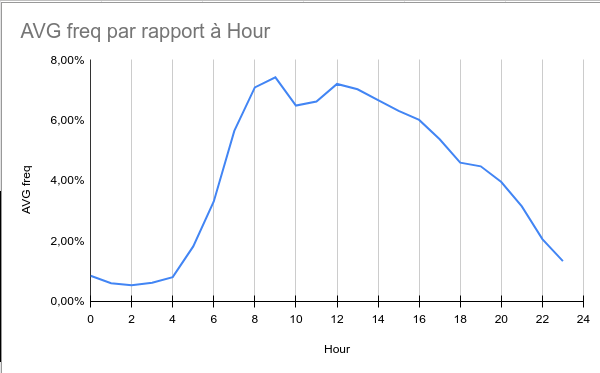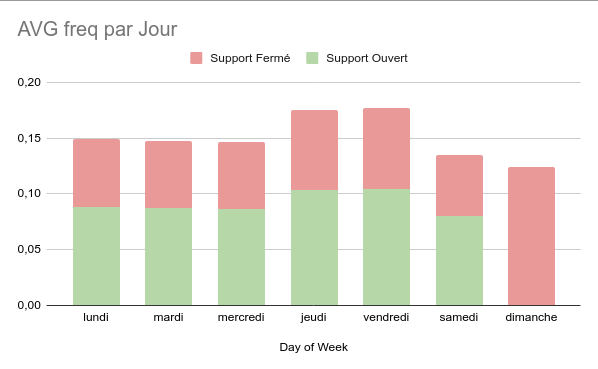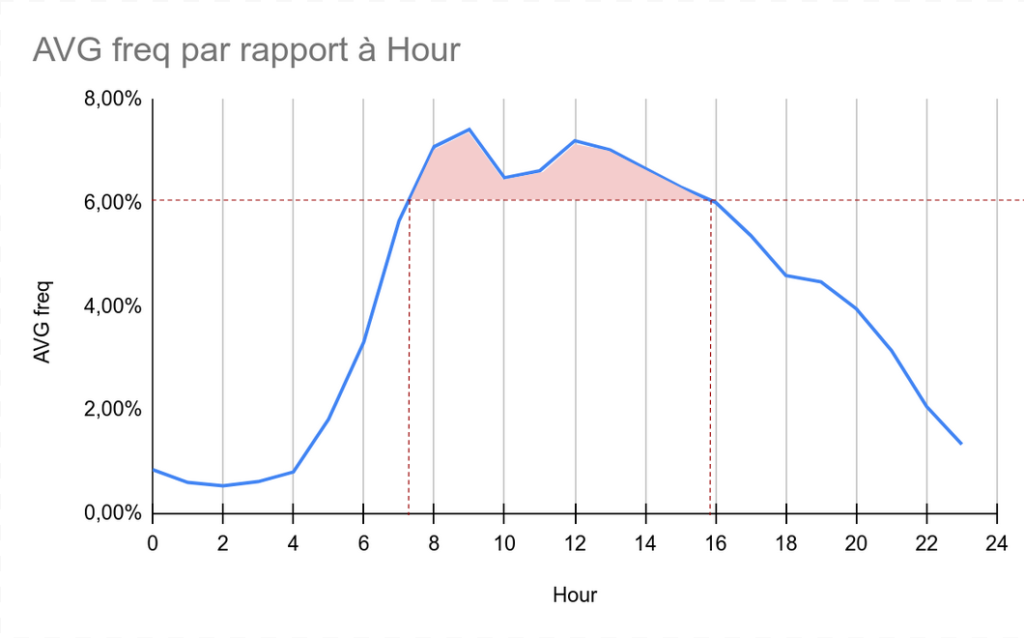Purpose and background
We studied 8 high-traffic Spellz chatbots to investigate the distribution of interactions over time.
We wanted to determine whether certain patterns were shared, but also to prove the value of chatbots for handling out-of-hours traffic.
So we’re going to show you the traffic distribution for each of these bots, as well as an averaged representation, and simulate the impact on a “standard” support service.
For each of the bots, we extracted the number of visits over 4 weeks, and calculated the breakdown by day of the week and by time of day.
Each bot is then treated as a statistical individual for the overall study, to avoid weighting by volume.
Examination of individuals
Let’s start by looking at the individual profiles of the 8 bots in our study, observing traffic by time of day:


It’s immediately apparent that the general pattern of traffic is the same for all bots, with an overall surge starting around 5 a.m., and a downturn beginning in the late afternoon.
Each bot then presents its own subtleties, with varying hourly peaks due to the profile of the services and their users.
Interestingly, traffic never drops to zero, and questions are asked even in the middle of the night!
Global Analysis
Hourly analysis
Averaging our 8 chatbots, we obtain the following hourly traffic breakdown:

In this case, we have a clearer picture:
Traffic that never stops, even at night
a gradual rise from 4 a.m.
peak traffic at midday
a gradual descent starting in the early afternoon
There is also a dip between 9am and 12pm, when employees start their working day.
Daily analysis
Averaging our 8 individuals, we obtain the following distribution of daily traffic:

The first three days of the week are equally busy, while Thursday and Friday stand out as particularly active days.
Traffic declines on Saturdays, and even more significantly on Sundays.
Importance of chatbots in off-peak periods
Let’s assume a standard customer support system, like CDiscount‘s, open Monday to Saturday: 9am – 6pm.
Any interaction taking place outside these times will be considered as being in non-working hours.
Based on the above data, we can divide traffic according to whether or not it occurs during working hours:

The importance of chatbots in providing answers to users at all times is demonstrated by the sheer volume of off-peak traffic every day.
Overall, 41% of interactions take place during non-working hours!
Importance of chatbots during working hours
Now that we’ve demonstrated the vital importance of Chatbot for responding to your users outside business hours, it’s legitimate to ask the question of Chatbot’s relevance during business hours.
If we look at the graph of hourly traffic, we can see that traffic is not uniform throughout the day. Peak traffic occurs between 7:30 am and 3:30 pm.

During this critical period, the Spellz Chatbot will lighten the support team’s load by answering a large number of questions.
Better still, by pre-qualifying requests that need to be handled, your chatbot will save your support team time, even when they need to be called in.
To find out more about how a Spellz chatbot can ease the burden and improve the productivity of your support team, take a look at our Lydia case study.
